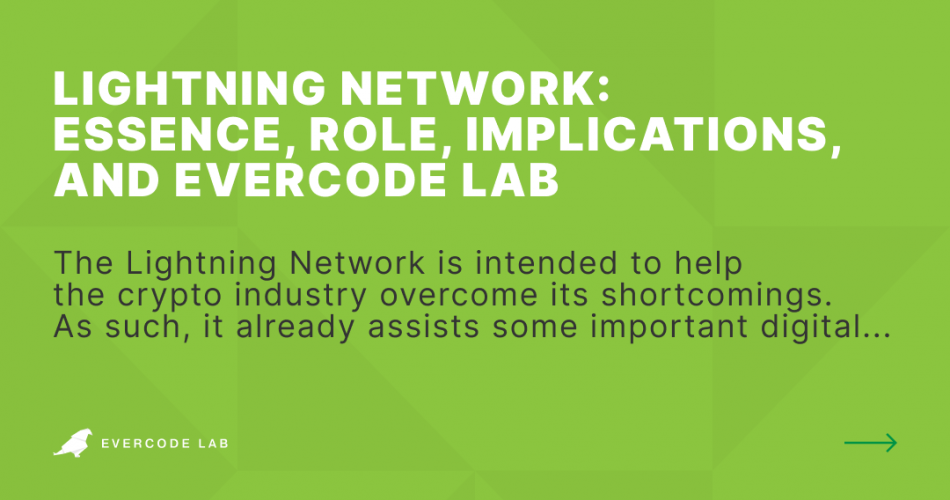What is the Lightning Network, also sometimes referred to as the Lightning Protocol? It is leverage making it possible to deal with one of the most important inherent flaws of crypto. Namely, it helps resolve issues with scalability and transaction speed. Today, we will describe it in greater detail and tell why we added it to our White Label Crypto Wallet. Yes, the Evercode White Label Wallet supports the Lightning Network, and we believe it is an important advantage of our business solution. Here is why.
Background Problems
To begin with, let us cite some figures. In December 2020, the BTC Blockchain used to process approximately 330 000 transactions every day. A little later, in January 2021, the number of transactions almost hit 400,000. That is a significant growth rate. However, it could have been more impressive!
On the one hand, this upward trend proves that people love crypto and are happy to use it. On the other hand, an important obstacle can also be identified. BTC, as an asset, suffers from scalability problems, cannot process multiple transactions quickly enough, and faces only limited growth opportunities.
So, what is the problem?
Blockchain Basics
The main thing here is that BTC is now different from what it was back in 2009. As of 2021, it is used by millions of people. Such a number of users is, quite predictably, accompanied by an increased number of transactions. As a result, BTC is not capable of processing all those transactions quickly.
Why? The reason is the so-called “block size limit” implied by the decentralized nature of the Bitcoin Blockchain.
Briefly speaking, all transactions are recorded and stored via a publicly accessible ledger we call “blockchain”. Unsurprisingly, this blockchain is a sequence of blocks. Each of those blocks, in turn, is a cryptographically protected number of all transactions that have been processed and recorded by the BTC network over the past ten minutes.
As a result, each new block is added to the end of the blockchain.
Back in 2010, the block size was limited to one megabyte. It means that any block larger than one megabyte will be automatically recognized as invalid and rejected by the network. This decision is still affecting the network’s performance in a negative way. The main thing is as follows: each transaction contains important data such as senders, recipients, amounts of satoshis transferred, etc. It cannot be omitted or ignored.
When it comes to a single transaction, it won’t be a big deal to process it. However, the network is expected to process a lot of transactions every second. Thus, much more space is needed.
But it is impossible, as the current one megabyte-large block size limit can handle from three to seven bitcoin transactions per second. The problem is that this is not long enough for the network, while the number of users continues to grow, which makes the situation worse. Therefore, many users have spent hours and even days waiting for their transactions to be executed.
Lightning Network
Lightning Network was proposed as a solution for this problem as early as in 2015. Technically speaking, it is an additional second-layer protocol functioning above the main blockchain network. To handle the scalability issue, it uses smart contracts to ensure almost instant transactions, with minimum fees, while keeping the P2P nature of Bitcoin.
It works like this:
- To enable instant micro-payments, the Lightning Network makes it possible for users to perform transactions with each other directly, without adding info to the public blockchain
- For this purpose, the Lightning Network applies P2P payment channels to transfer funds
- Such a channel is created by a so-called “multisig” crypto wallet storing a certain amount of coins. Those coins can be provided by a single party or by both of them
- The channel is opened via a regular bitcoin transaction. All the required data concerning this transaction will be added to the blockchain. It will also be added to it once the channel is closed.
- At the same time, later, all transactions performed via the channel will take place between the parties directly, with no need to add data to the blockchain
- Hence, the payment channel can be compared with a sort of “digital safe,” storing funds that will subsequently become available to users involved
This approach to crypto transactions has gained significant popularity. Back in November of 2018, the total value locked in Lightning Network was slightly over $1.5M. As of November 2021, it exceeds $180M.
The Evercode White Label Wallet can support Lightning transactions. It is noteworthy that the circle of WL wallets making it possible is quite limited, so our product is definitely worth your attention.
More than that, with us, you can benefit from such advanced capabilities as dApps, NFTs, web apps, etc.
Do not hesitate to contact Evercode Lab!
